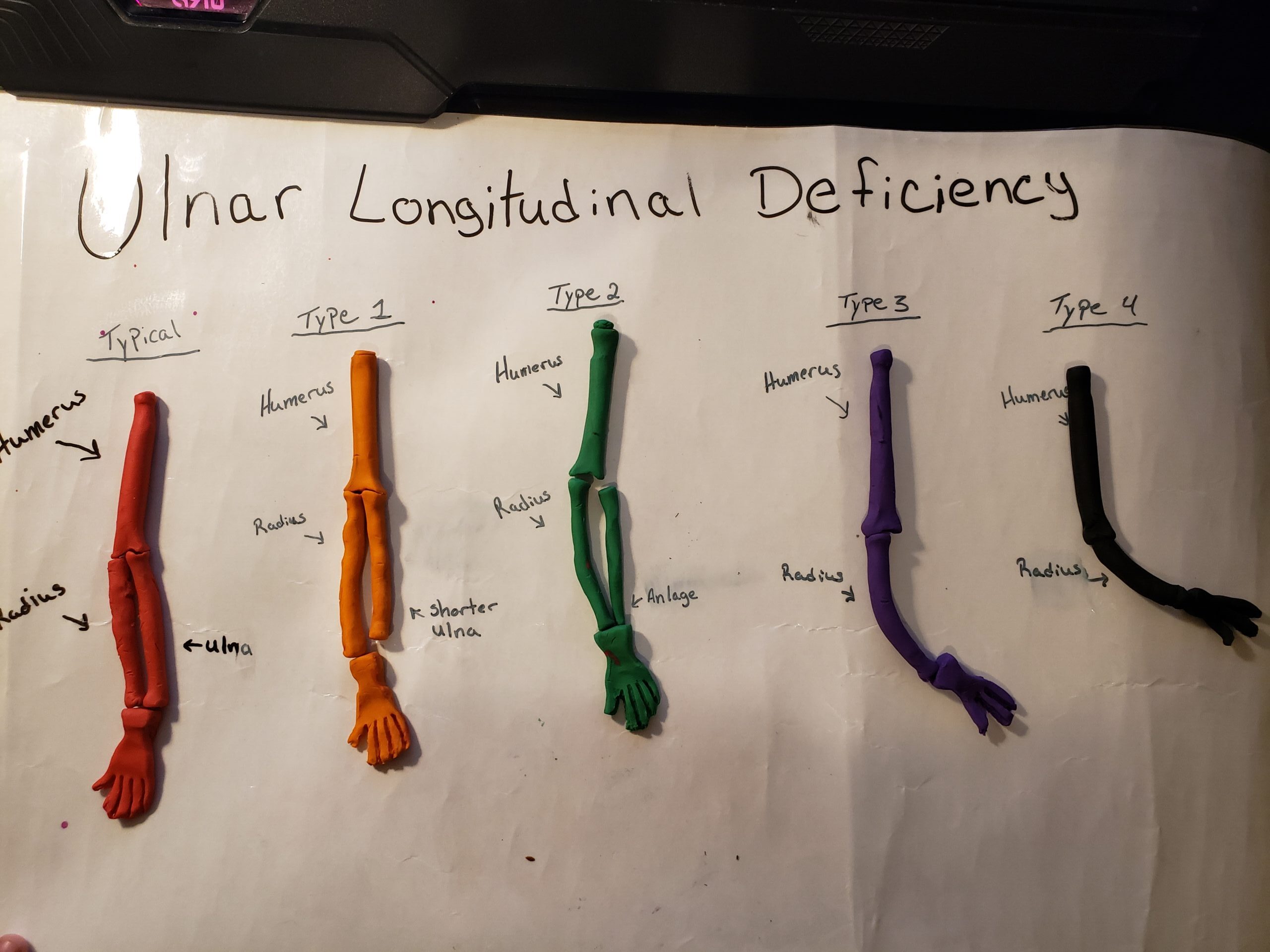This project shows the different types of ulnar longitudinal deficiency. This is a bone growth defect to the ulna that causes the forearm to be deformed.

This project shows the different types of ulnar longitudinal deficiency. This is a bone growth defect to the ulna that causes the forearm to be deformed.
Rebeca did her STEAM project on ulnar longitudinal deficiency. Ulnar longitudinal deficiency is a birth defect that causes issues with the development of the ulna. The defect is also sometimes called ulnar club hand because it can sometimes result in the hand and are looking like a club. She wrote about how there are four types ranging in severity from simply a shorter ulna to the ulna being missing completely. The defect not only effects the ulna, but the absence of the ulna causes the radius to curve and for finger and wrist bones to be missing. In the most sever type of the defect the radius is curved and fused to the humerus meaning there is no elbow movement. A statement in her paper said that they do not know what causes this birth defect. For the art portion of her project she made clay models of the different types of the defect. She used different color of clay for each type of the defect and wrote some explanations of what the clay models represent on the paper they are resting on. The objective her project was on was unclear to me, but it could have been any of the ones about bones and their growth or shape. Something I found very interesting about her project and enjoyed very much was that she interviewed a mother of a child with this defect. The information she found during her interview helps give an insight of how life is with this defect and it shows how dedicated she was to this project.